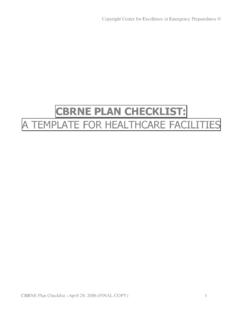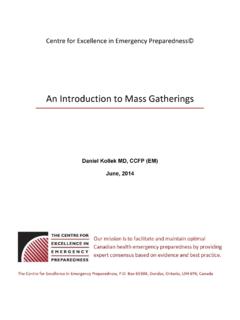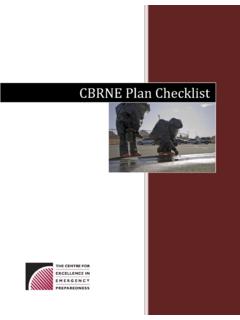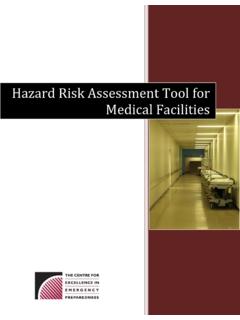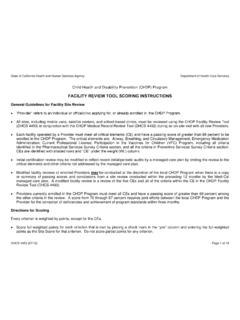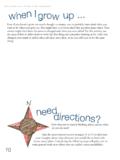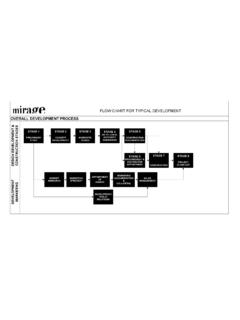Transcription of Chemical, biological, radiological and nuclear ...
1 ORIGINAL RESEARCH RECHERCHE ORIGINALE. EM Advances chemical , biological , radiological and nuclear preparedness training for emergency medical services providers Daniel Kollek, MD;* Michelle Welsford, MD; Karen Wanger, MDCM . ABSTRACT chimiques, biologiques, radiologiques et nucl aires (CBRN). M thodes : Nous avons con u un questionnaire administr . Objective: We assessed the self-reported theoretical and en ligne pour mesurer le degr de pr paration th orique et practical preparedness training of Canadian emergency med- pratique du personnel des services pr hospitaliers en cas de ical services (EMS) providers in chemical , biological , radio- menaces CBRN. Le personnel des services m dicaux d'ur- logical and nuclear (CBRN) events. gence de la Colombie-Britannique et de l'Ontario a t invit . Methods: We designed an online survey to address the theo- y r pondre.
2 Retical and practical CBRN training level of prehospital R sultats : Parmi les 1028 r pondants, 75 % taient de sexe providers. Emergency medical services staff in British Colum- masculin et les groupes d mographiques les plus volu- bia and Ontario were invited to participate. mineux se composaient de personnel de premi re ligne cu- Results: Of the 1028 respondents, 75% were male, and the mulant plus de 15 ann es d'exp rience. Soixante-trois pour largest demographic groups were front-line personnel with cent seulement des r pondants ont mentionn avoir re u une more than 15 years of experience. Only 63% of respondents formation th orique ou pratique pour travailler dans un mi- indicated they had received either theoretical or practical lieu contamin , les 37 % restants ayant signal n'avoir re u ni training to work in a contaminated environment, leaving 37%.
3 L'une ni l'autre. Parmi ceux qui avaient re u un type de forma- who indicated they had received neither type of training. Of tion, 61 % ont indiqu avoir re u une formation pratique ou those that had received any training, 61% indicated they had concr te et 82 % ont indiqu avoir re u un type de formation received hands-on or practical training and 82% indicated pour la reconnaissance d'une zone potentiellement contam- they had received some training in identification of a possibly in e. Seulement 42 % avaient re u une formation relative aux contaminated scene. Only 42% had received training for sympt mes occasionn s par les agents neurotoxiques, 37 %, symptoms of nerve agents, 37% had received training for pour les sympt mes occasionn s par les agents v sicants, et symptoms of blister agents and 46% had received training for 46 %, pour les sympt mes occasionn s par les agents as- symptoms of asphyxiants.
4 Thirty-two percent had received phyxiants. Trente-deux pour cent avaient re u une formation training for the treatment of patients exposed to nerve sur les agents neurotoxiques et 30 %, sur les agents v si- agents, and 30% had received training for the treatment of cants. Seulement 31 % de tous les r pondants avaient re u patients exposed to blister agents. Only 31% of all respon- une formation pour le d pistage des radiations. dents had received training for detecting radiation. Conclusion : Les accidents CBRN comportent des risques par- Conclusion: CBRN events involve unique hazards and require ticuliers et requi rent une formation th orique et pratique specific education and training for EMS providers. A large pro- particuli re. Une proportion importante du personnel des ser- portion of Canadian EMS providers report not having received vices m dicaux d'urgence au Canada signale ne pas avoir the training to identify and work in contaminated environments.
5 Re u la formation n cessaire pour reconna tre les milieux contamin s et pour y travailler. Keywords: CBRN, EMS, terrorism, PPE disaster preparedness, disasters, disaster planning, emergency medical services R SUM INTRODUCTION. Objectif : Nous avons valu le degr de pr paration th orique et pratique autod clar e par le personnel des ser- A large-scale toxic chemical release in a populated area vices m dicaux d'urgence au Canada en cas de menaces has a high likelihood of leading to a mass casualty *Clinical Associate Professor, Associate Professor, Division of Emergency Medicine, McMaster University, Hamilton, Ont., Medical Director, Regional Paramedic Base Hospital Program, Hamilton Health Sciences, Hamilton, Ont., Clinical Associate Professor, Division of Emergency Medicine, University of British Columbia, and Regional Medical Director, British Columbia Ambulance Service, Vancouver, BC.
6 Submitted Jul. 22, 2008; Revised Dec. 20, 2008; Accepted Jan. 21, 2009. This article has been peer reviewed. CJEM 2009;11(4):337-42. CJEM JCMU 2009; 11 (4) 337. Kollek et al. incident, which, in turn, would have a sizeable impact on 2. Have Canadian EMS staff received practical training the health care ,2 In order to save as many lives as in CBRN-event response? possible in such events, on-scene medical triage and treatment is crucial. The challenge for emergency med- METHODS. ical services (EMS), comprised of paramedics and fire first-responders, is a combination of the following: rec- We performed a structured review of the literature us- ognizing that a chemical , biological , radiological and nu- ing Ovid MEDLINE (1950 to present) and other non- clear (CBRN) event has occurred; providing resuscitative indexed citations with the following search strategy: care in or near a potentially contaminated area; identify- [Emergency Medical Services/, or Emergency Medical ing the toxic agent to allow specific treatment with an an- Technicians/, or Ambulances/ or or para- tidote; and ensuring the safety of scene responders by medic$.]
7 Tw] AND [disasters/ or disaster planning/, or avoiding contamination or cross-contamination through- terrorism/, or ]. Based on this review, we de- out the events. Antidotes should ideally be delivered as signed a survey of the theoretical and practical CBRN. quickly as possible, preferably 5 training of EMS providers. The survey questions were Emergency medical services providers are generally then reviewed for applicability, clarity and validity by the only medical personnel at the scene and face the EMS staff in Ontario and British Columbia. Technical risk of primary exposure to biological agents, toxins terms that might have been open to misinterpretation or This requires a higher degree of protec- by respondents were clearly defined in the survey. tion than that required at the hospital against sec- The final survey was posted on a website that was ondary exposure.
8 Moreover, the facility can at times only accessible by individuals knowing its complex ad- prepare for the arrival of victims; request decontami- dress. Emergency medical services providers were in- nation and disrobing, ideally before arrival; and use vited by email and posters to complete the survey. In isolation measures. Ontario, the survey invitations were distributed via Experience with chemical disasters suggests that res- e-mail by the Ontario Paramedic Association. In addi- cuers and emergency department staff should know the tion, posters were distributed in ambulance bases across basic characteristics of chemical agent toxidromes and the province. In British Columbia, the survey was dis- hold drills on prehospital triage, initial treatment and tributed to both paramedics and fire first-responders. the transport of 9 Annual mock disaster exer- Paramedic members of the British Columbia Ambu- cises can improve decontamination, triage, on-scene lance Service were reached through the provincial medical care and victim e-mail system.
9 For fire first-responders, the survey invi- The issues surrounding CBRN agents are sufficiently tation was sent to the Fire Chiefs' Association of British different from other mass casualty situations to deserve Columbia, who then distributed the information to its special attention in planning and training. members (fire chiefs). Chiefs of each fire department in Some countries have developed plans for the prehos- turn circulated the information to its members. pital emergency response to conventional terrorist at- Respondents were asked to provide demographic in- tacks, and to CBRN 14 Three surveys published formation including their age, sex and years of experi- in 2007 evaluated the self-reported training of EMS ence. To maintain anonymity but allow the investigators providers for CBRN-type events in the United States to track multiple entries, the first half of the postal code and found that the rates of training were worryingly and the last 3 digits of each respondent's telephone 17 We could not locate an equivalent survey of number were also collected.
10 Canadian EMS providers, and are aware of only a small In a previous study2 this method of data collection was number of specific CBRN teams in selected locations. effective for collecting and collating data from individuals We have previously studied Canadian hospital readiness at distant sites, which allowed the EMS crew members to for CBRN events,2 but no study describes the prehospi- provide information while away from the workplace (in tal component. Our study assessed the perceived readi- the event that there might be a bias in their responses ness of EMS personnel in British Columbia and On- while supervised) and at any time of day or night (since tario to deal with CBRN events. We set out to answer the vast majority of EMS crews are shift workers). the following 2 questions: To address CBRN training, we first asked the respon- 1. Have Canadian EMS staff been trained in the the- dents, Have you had either theoretical or practical train- ory of CBRN-event response?

